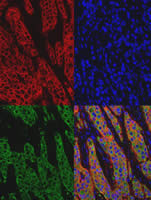New insights into spread of breast cancer
One third of breast cancer tumours change form when they spread, University scientists have found.

The discovery suggests that different drugs could be used to target secondary tumours than were used to fight the primary cancer.
Scientists from the Breakthrough Breast Cancer Research Unit at the University analysed 211 tumours which had spread from the breast to the lymph nodes in the armpit.
They found that in 39 per cent of cases the disease in the lymph nodes had changed type.
Surprising results
Researchers were surprised to find the disease changed in such a high proportion of patients, and in so many ways, when it had spread.
For example, 20 tumours changed from oestrogen receptor (ER) negative to ER positive.
This change would mean hormone therapies such as tamoxifen, which would not have worked for the original tumour, could help treat the disease if it has spread.
Other tumours changed from ER positive to ER negative, which suggests those patients may be given treatments which will not benefit them, and are therefore experiencing side effects unnecessarily.
This study suggests there is a need to test which type of disease a woman has in the lymph nodes, because it could radically alter the course of treatment she receives. We now need a clinical trial to see how these results could benefit patients.
The research is published in Annals of Oncology.
A clinical trial needs to be carried out to fully evaluate the benefits of testing cancer cells in the lymph nodes before it can be approved for use on the NHS.

